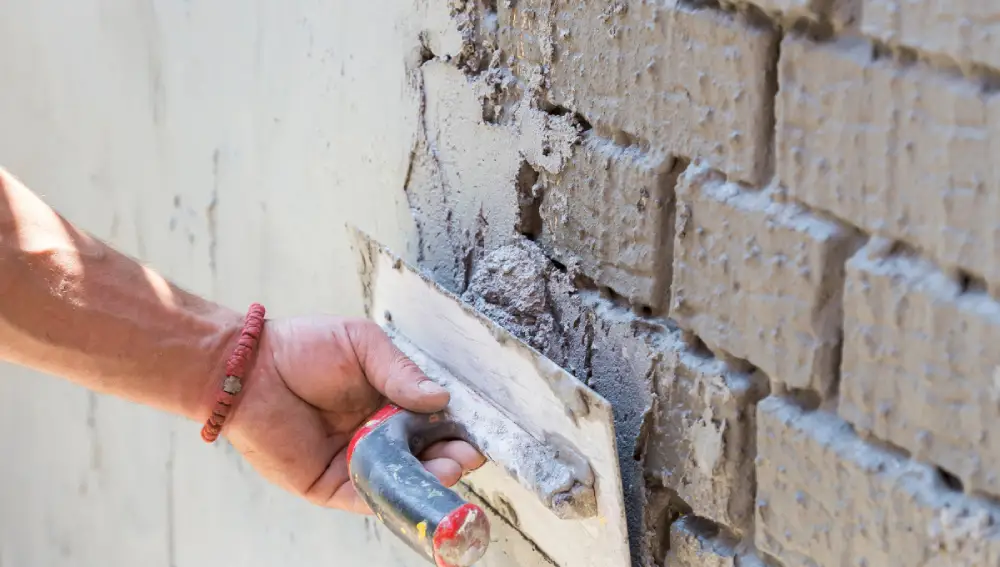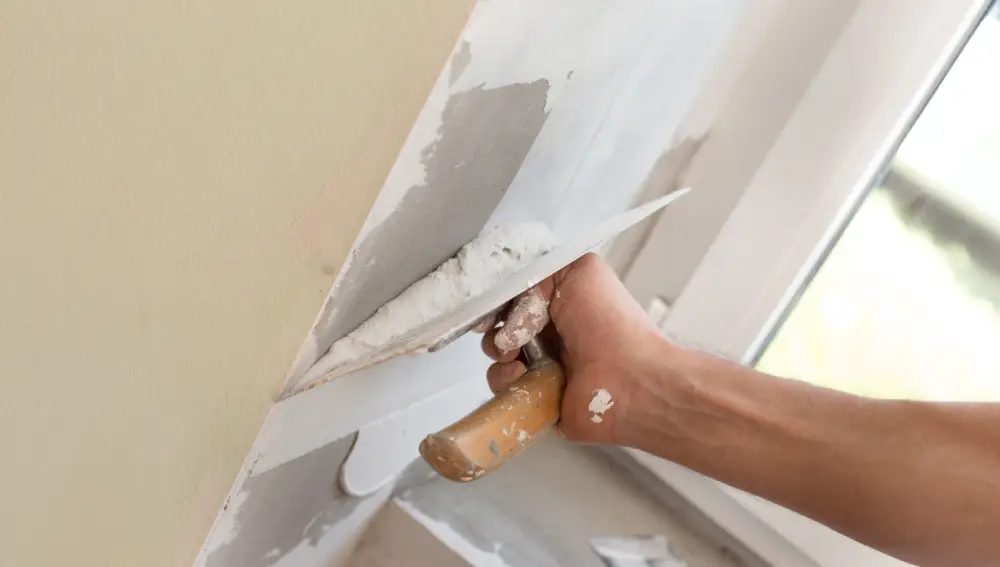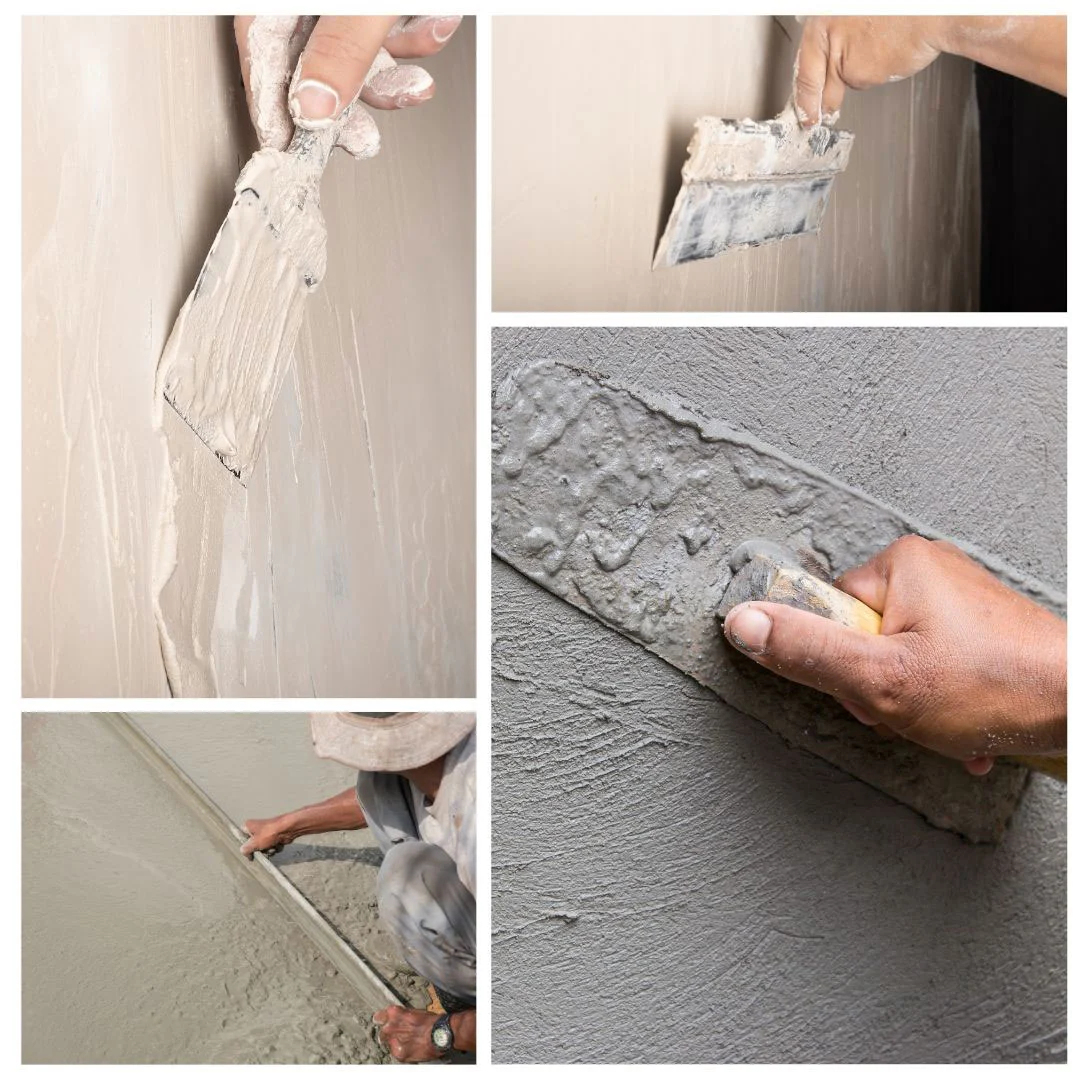One of the most important aspects of making your home look beautiful is doing perfect plastering. It is an essential part of the construction process, and plasters are meant to enhance the splendor of your house. Plastering the walls of a building is a requirement as it decides the strength of the building. One needs to be super careful when the plastering work is going on in their house as it is the key to a healthy and long building life.
In this article, we will give you all the necessary information regarding the plastering of a building so that you become well aware of all the minute details of plastering and construct your dream home most amazingly and make it look beautiful in and out.
- 1 What is Plaster?
- 2 What do you mean by plastering?
- 3 What are the different types of plaster?
- 4 What are the advantages of plastering?
- 5 What are the disadvantages of plastering?
- 6 What is overboarding?
- 7 What is skimming?
- 8 What is dry lining?
- 9 What are the tools used in plastering works?
- 10 How to plaster ceilings?
- 11 How long does it take to plaster one room?
- 12 Conclusion:
What is Plaster?

Before understanding the requirement of plastering during construction, it is essential to get some deep knowledge about what Plaster is. Plaster is a building material manufactured in the form of a dry powder and converted into a paste by mixing water into it. This paste is used for the protective or decorative coating of the building walls and ceilings.
What do you mean by plastering?
Plastering is the process of covering uneven and rough surfaces with plastic materials such as Plaster or mortar to create a uniform, smooth, regular, transparent, and durable surface. A mixture made of lime or gypsum, sand, water, and sometimes fiber helps to make the walls and ceilings more waterproof, adhesive, and termite-resistant. Plastering is also done to prevent the entry of porous materials into the masonry surfaces of the building. Plastering provides a satisfactory base for whitewashing and color washing in the building.
What are the different types of plaster?
There are different kinds of plastering done depending on the mortar. Below is a brief description of the most typical types of plasters:
Cement Plaster: This plaster is made by combining sand, portland cement, and water. Cement plaster is used to create a smooth surface on the interior and exterior of masonry structures. It is considered the most suitable plaster to reduce dampness. The materials are mixed, one cement bag of plaster is created at a time, and the plaster is eaten within 30 minutes of adding water.
Lime Plaster: It is composed of sand, hydrated lime, and water. Lime plaster is created when lime is used as a binding agent. Sand and lime are often combined in equal parts to make the mortar used in lime plaster. It is advisable to add a small quantity of cement into the lime plaster’s mortar so that the strength of the lime plaster is increased.
Lime plaster does not tend to set when submerged in water. The lime can stay soft for longer if a thick layer or multiple coats are applied.
Mud Plaster: Well-tempered clay or brick earth, chopped straw, hay, loose soil, hemp, and cow manure are all used in equal amounts to make mud plaster. All these ingredients are combined and lifted with a good amount of water for nearly seven days. This is thoroughly mixed once again until the required plaster consistency is achieved; in some cases, mud plaster which is made of clay and sand, is also used.
Gypsum Plaster: Gypsum plaster can also be referred to as plaster of Paris. Gypsum is heated to 150°C to create calcium sulfate hemihydrate, which is then used to make the mortar for the plaster. Plaster of Paris powder is also termed calcium sulfate hemihydrate powder, which is combined with a small quantity of water to create a slurry. Gypsum crystals are made by rehydrating the slurry once again.
With the help of trowels and metallic float, the plaster of Paris paste is applied to rough walls or ceilings. The paste is well-leveled overall on the surface. Once the paste is dried, it is polished with sandpaper to give a smooth finish to the walls. Plaster of Paris and white cement look alike but have major differences in between them
Heat-resistant plaster: This plaster is made to endure temperatures as high as 50 degrees Celsius. This plaster is mainly used for placing over chimneys and exhaust pipes that are connected to stoves. These plaster mortars are explicitly made from inert materials like fly ash and a balanced mixture of sand and cement.
What are the advantages of plastering?
Plastering is an essential stage in creating a solid foundation for building projects. In terms of its decorative and aesthetic appeal, it has several advantages:
- Existing drywall is given a sturdy and long-lasting finish by plastering. When water leaks out of the cement mixture, a chemical reaction occurs. The bond is strengthened as a result of this reaction, making the plastered walls more durable.
- An even surface is created after plastering is done, which helps when applying paints. Painted walls give a stunning look to the walls of the houses.
- Plastering adds a decorative charm. The builder can produce various designs and textures because plastering gives the walls a stable and uniform finish.
- Plastering is a quick and simple procedure allowing on-time completion of any renovation work.
- Plastering is pollution-free; even when exposed for extended periods, it produces less dust on its surface.
- Plastering is less likely to cause cracking on surfaces, thus, leaving a flawless finish on its surfaces.
What are the disadvantages of plastering?
When compared to drywall construction, plaster walls have some disadvantages, which are as follows:
- Building plaster walls incurs high cost as more skilled labor are required.
- Maintaining plaster walls is quite challenging. Drilling pilot holes and setting anchors are required for hanging pictures or televisions. Textured plaster walls can be challenging to maintain in terms of cleanliness.
- Plaster becomes more rigid and fragile as it ages, thus raising the possibility of surface cracking.
- Repairing or replacing plaster requires skilled hands. Professionals can fix large cracks and sagging ceilings, but the procedure is expensive and time-consuming.
What is overboarding?
Overboarding refers to applying new plasterboard over the top of the existing plastered surface instead of putting the new plasterboard directly on the ceiling joists. New plasterboard would be put up on top of the old plasterboard in case the ceiling is artexed, lath, and plastered. It is essential to find and fix the original ceiling dots when the overboarding occurs.
What is skimming?

Skimming is a type of plastering method. A thin layer of coat is applied to a plastered wall during the process of skimming. Skimming usually takes place on a plastered wall. It is a difficult process to perform and requires a skilled plasterer who knows how to bring the finish because, in skimming, the finish is the ultimate lookout. Skim plastering creates a continuous, smooth surface that is ready for decoration. The skim coat is used on the uneven cement surface. Various other plastering procedures must be done to create a smooth surface, but the quality of the finish depends on the skills of the plasterer.
What is dry lining?
Dry lining refers to cladding for internal walls and ceilings to prepare them for painting r covering. A flat and smooth surface is created by attaching a plasterboard.
The plasterboard used in the dry lining can hide pipes and wires, produce insulation space, and even provide soundboarding. Dry lining can be used for various applications, such as it can be added to surfaces that include brickwork or uneven surfaces. Additionally, it can be used to build curved walls, which allows for creativity and helps in managing small or uniquely shaped structures.
New buildings are often made with stud walls to create separate living spaces. Dry lining plasterboard may be readily added to these stud walls to make them smooth, strong, and safe.
What are the tools used in plastering works?
We can get a well-plastered wall with a smooth finish by using some important tools referred to as plastering tools. So below, we have discussed some of the plastering tools with their uses.
Finishing Trowel: A finishing trowel is essential for plastering work. It uses a larger, flatter blade to smooth the plaster and give your surfaces an incredibly smooth finish.
Window Trowel:Most plasterers will use their window trowel when they can’t use any other trowels near windows. Due to its smaller blade face, which gives better maneuverability across the wall, the window trowel is specially designed for use around your house windows.
Mortar Stand: A mortar stand is a compact, foldable table that can hold the plastering material while allowing easy access while working. This is a simple tool used in plastering, but it has significant impacts.
Hawk: One of the essential tools the plasterer ensures to have while plastering is the hawk. It is a portable surface that holds the plaster material when moving. Hawk helps apply plasters across the walls and ceilings quickly and simply.
Snips: This plastering tool is an essential element required in modern plastering. It helps to cut both popular types of beading metal. All plasterers should use a durable set of snips for smooth plastering work.
Plasters Float: This tool is used to give a smooth and high-quality finish to the final layer of the plaster. Plasters usually carry this tool with them to smooth down the plaster’s top layer, and people will be able to see the surface end up even.
Scarifier: It is a large metal comb that helps the plasterer to comb lines directly into the render, and it creates a stronger bond when the next layer of plaster is added to the surface. This tool helps to simplify the plastering work.
How to plaster ceilings?
Plastering a ceiling is quite a complicated job and, if not done properly, will pick up lumps and bumps and reflect during daylight and night. One can traditionally plaster a ceiling or can do it by applying plaster to existing drywall. Below are the basic steps that one must know for plastering the ceiling of their house
Prepare the area for plastering: Plastering a ceiling is primarily messy work, so try to cover the entire floor with a few large clothes. Make sure the furniture near the plastering area is well covered with plastic sheets because splatters and spills are a natural part of the plastering procedure. Put on a dust mask, safety glasses, and some old clothes you don’t mind spoiling. Several buckets for mixing plaster, as well as a bucket of water for cleaning you’re plastering tools, are also required.
Prepare the Ceiling: Take out any screws or nails on the ceiling. Before you start, make sure that all light fixtures are covered and taped. You will need to sand these spots with a sanding block if there are any spots or crumbling plaster on the ceiling.
Mix the Plaster: You must always add the plaster to the water, never the other way around. After preparing, the plaster must have a thick, creamy consistency with no lumps.
Apply the Plaster: Put a good amount of plaster on your hawk and remove some of it using a trowel. Trowel the plaster onto the ceiling in thin (about 2mm thick) and even rows, starting from the edge of the wall. Reduce the amount of trowel-line evidence as much as possible while maintaining consistency and evenness.
It is now safe to trowel on the second coat of plaster since the first coat will have dried very quickly. It would help if you had about 4-5mm plaster on the ceiling after applying the two layers. Once the plastering is done, clean up the entire floor so that no stains get settled.
How long does it take to plaster one room?
The amount of time it takes to plaster a room depends on what needs to be done and how big the room is. Usually, it takes a day or two to plaster a room. The rest can be estimated after visiting the place and the portion of the building where plastering will happen.
Conclusion:
Plastering is a very important process for any of the ideal construction projects, Gypsum and cement are known for best plaster. Therefore, it is suggested to find the right construction partner for doing this difficult task. At Brick & Bolt, we have precisely the correct equipment and workforce with the appropriate expertise and experience. For any of your needs and questions regarding construction or getting a free quote, contact us now at +91 7505 205 205

